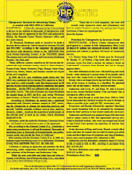 :dropcap_open:A:dropcap_close:s if saving for retirement isn’t challenging enough, add to it the financial and emotional responsibility of helping your kids and attending to the needs of elderly parents, and you’re officially a member of the Sandwich Generation.
:dropcap_open:A:dropcap_close:s if saving for retirement isn’t challenging enough, add to it the financial and emotional responsibility of helping your kids and attending to the needs of elderly parents, and you’re officially a member of the Sandwich Generation.
Buzz about the Sandwich Generation emerged several years back as the bulk of Baby Boomers reached age 50. While at the peak of their careers, many Boomers met this milestone with big financial obligations looming – funding their retirement, paying for their kids’ college, and caring for aging parents. Now, as more settle into their 60s, members of this demographic set face a new array of challenges.
Changing needs of aging parents
Watching your parents’ health deteriorate with age is something most of us anticipate having to cope with as we approach middle age. Adding to the pain for many Baby Boomers is the bad economy’s impact on their parents’ finances. In many families, the nest egg Mom and Dad relied on to fund their late-in-life needs has been eroded by declining investments and a sunken housing market.
Depending on the extent of their losses, the situation may require that their adult children step in and help. While their parents may have once thought they would live independently for their remaining years, that may no longer be a reality. What’s more, medical advancements have allowed people to live longer than ever before, putting extra strain on their retirement savings and their Sandwich Generation children.
Boomerang kids stay dependent longer
On the other side of the sandwich are young adult children who aren’t able to reach financial independence. Graduating from college once meant getting a ‘real’ job and living on your own. With today’s soft job market, many recent graduates are realizing they can’t live independently and are finding shelter under mom and dad’s roof once again – thus being dubbed boomerang kids.
Finding a solution
While the Sandwich Generation faces some issues foreign to past generations, there are ways to help lower your stress level and ease your financial burden if you are feeling the squeeze. Consider these suggestions:
Update your financial goals regularly. As your family situation evolves, you may need to reassess your target retirement date and the amount of savings you are planning to amass for retirement. Dependent parents and children may translate into financial obligations for you, and the sooner you plan for them, the better.
:dropcap_open:As your family situation evolves, you may need to reassess your target retirement date:quoteleft_close:
Maintain control of debt. Saying that you’ll eliminate debt from your life may not be a realistic goal. A more achievable bogie may be to steer clear of new debt. With uncertainty approaching, you may want to avoid the lure of your dream home in lieu of a more secure future for your family. Consider what you really need rather than what you want when making major buying decisions requiring long-term financial commitments.
Discuss care options with your parents. It may be difficult to approach your parents with this topic, but planning early can pay off both financially and emotionally. If you explore possibilities while your parents are still healthy, more options may be available – plus, your parents can help you work toward mutually desired goals.
Protect your assets with insurance. Revisit your disability and life insurance coverage to make sure your family is protected in case you are no longer able to work or suffer an untimely death. Long-term care insurance for you or your parents may also be an option to help offset the asset-draining cost of nursing home or home health care.
Put yourself first. As you count down to the end of your career, make sure your retirement plan remains a high priority among your financial obligations. While you can finance many things in life, it’s hard to put retirement on a credit card. Don’t be a Sandwich Generation martyr by putting your own needs after those of your adult children or aging parents. You’ll be a much more valuable parent and child with your own financial house in order.
Advisor is licensed/registered to do business with U.S. residents only in the states of AL, AR, AZ, CA, CO, CT, DC, FL, HI, LA, MA, MD, ME, NY, OH, PA, RI, TN, TX, UT.
Be sure to ask your sales representative about the insurance policy’s features, benefits and fees, and whether the insurance is appropriate for you, based upon your financial situation and objectives.
Brokerage, investment and financial advisory services are made available through Ameriprise Financial Services, Inc. Member FINRA and SIPC. Some products and services may not be available in all jurisdictions or to all clients.
Rich Van Loan is a specialist in retirement, as well as a Senior Financial Advisor at Ameriprise Financial Services, Inc., in Boston MA. He may be contacted at [email protected]


 :dropcap_open:F:dropcap_close:or the first time in our profession’s history, we are soon to be placed on a level playing field with our M.D., D.O., Nurse Practitioner and Physician Assistant peers. Soon, the National Registry of Certified Medical Examiners will become final rule for the Federal Motor Carrier Safety Administration. What this means is that Chiropractic Physicians will be on the front lines, keeping our roads safe for truck and school bus drivers. But what does all this really mean for each of us?
:dropcap_open:F:dropcap_close:or the first time in our profession’s history, we are soon to be placed on a level playing field with our M.D., D.O., Nurse Practitioner and Physician Assistant peers. Soon, the National Registry of Certified Medical Examiners will become final rule for the Federal Motor Carrier Safety Administration. What this means is that Chiropractic Physicians will be on the front lines, keeping our roads safe for truck and school bus drivers. But what does all this really mean for each of us?


 Re: Vol 33, Issue 1
Re: Vol 33, Issue 1